What Is LuckyRelic Mac Virus?


LuckyRelic is a browser extension that affects Safari and other browsers. It has the capability to generate fake search results then ask victims to download adware on their Macs in exchange for these fake websites. LuckyRelic is a very aggressive advertisement platform that targets and infects users without having any warning. Victims linked to LuckyRelic may be redirected when they enter their credentials into other legitimate websites such as PayPal or Bank of America. Having LuckyRelic in their Mac is one of the most popular ways hackers get hold of valuable user information. Users have complained that LuckyRelic has been installed on their Macs by a number of unethical hackers and fraudulent sites. These parties will use any way they can to trick the users into downloading fake software on their systems.
How Is LuckyRelic Mac Virus Distributed?
In order to get LuckyRelic in your system, hackers will use tricks in the form of a fake update software that is downloaded and installed on the user’s Mac. Hackers will then use LuckyRelic in ordet to do phishing attack. Victims are then directed to download and install malicious software after entering their personal information into LuckyRelic’s fake PayPal or Bank of America sites. Hackers are using phishing and spyware in order to achieve their goals. The LuckyRelic Mac virus may also be downloaded as a malware from websites that provide pirated software. Hackers will then manipulate users into downloading phishing software on their Macs that directs them to the fake pay pal site linked to LuckyRelic. It is also possible for hackers to install the LuckyRelic virus without the user’s knowledge by exploiting security vulnerabilities on the user’s computer.
- Third party installation of software
- Browsing malicious websites/redirect from legitimate websites
- Mail attachments containing malware download links
- File downloads containing malware download links
- Infected devices connected to your computer/network etc.
How harmful is LuckyRelic hijacker?
LuckyRelic is a very dangerous browser hijacker that hackers may use in order to steal a variety of valuable data from the user’s Mac such as personal information and passwords. Hackers will also install fake versions of popular web pages such as eBay, Amazon, and Yahoo with LuckyRelic on the victim’s machine. This will cause the user to be redirected to these fake sites on a regular basis unless they remove this search engine from their browser.
LuckyRelic may have the following symptoms if it is installed in your browser:
• Redirects generated by LuckyRelic and other unwanted web pages.
• LuckyRelic may alter your browser home page, search engine, and new tab page.
• You may receive fake error messages that are written to look like they are from Windows or Mac OS X.
• Your computer’s performance may suffer and be sluggish as a result of this malware infection.
How did I get infected?
In some cases, a LuckyRelic virus may be loaded onto your computer without you knowing it. Hackers may attack user’s computer using Trojan software. There is a chance that you downloaded a malicious software from unsafe or hacked sites. The most common ways LuckyRelic is spread is through vulnerable websites, social media malware and potentially unwanted applications that you may download onto your computer. Hackers may take advantage of the open ports and weak security settings within your computer to execute a successful malware infection.
Expert Recommendation To Remove LuckyRelic Virus
The best way to keep off such threats in future is to always use updated Anti-virus software, along with Anti-spyware tool.
How can I remove LuckyRelic virus ?
Step 1: Uninstall LuckyRelic and remove related files and objects
- Open your Finder –> Click on GO –>Click on Utilities
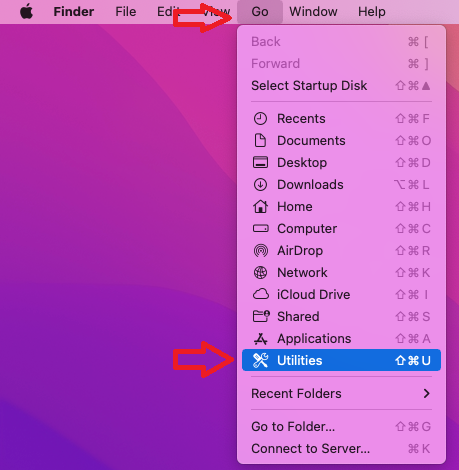

- Find Activity Monitor and open it
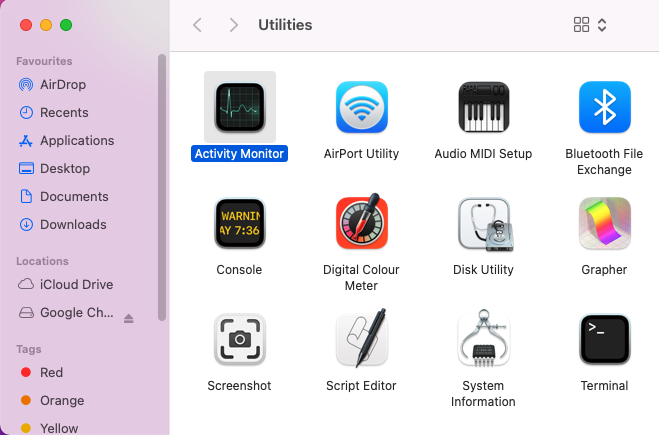

- Review all the processes in Activity Monitor and write down the ones related to LuckyRelic virus
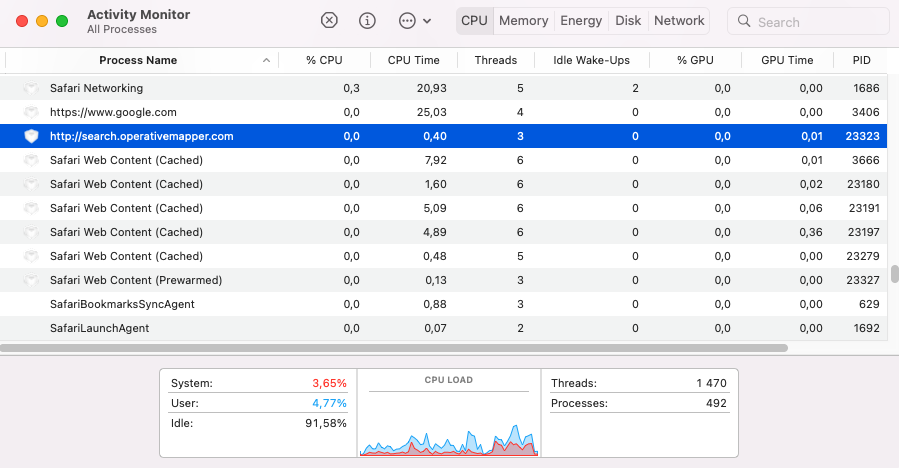

- Select Quit
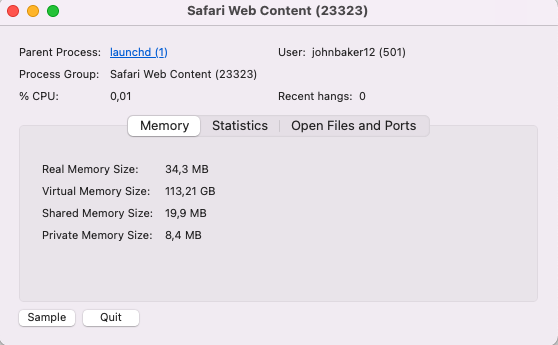

- To kill the malicious process, choose the Force Quit option.
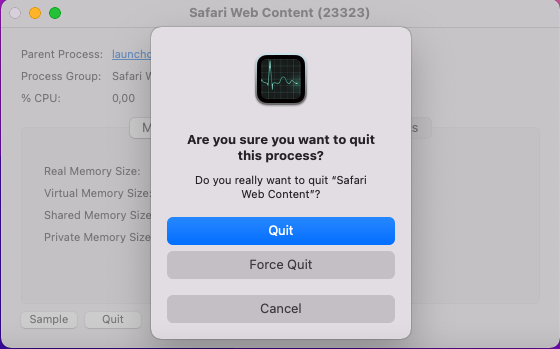

Step 2: Remove LuckyRelic – related extensions from Safari / Chrome / Firefox
The first thing you need to do is to make sure Safari is not running. If you have troubles closing it, you may need to Force Quit Safari - (Start Activity Monitor by opening up Finder, then proceed to Application --> Utilities --> Activity monitor. Locate the Safari process and force quit it.
Safely launch Safari again by holding the Shift key and clicking on the Safari application icon - This will prevent Safari’s previously opened malicious web pages.
In case that you still are having trouble with scripts interrupting the closing of unwanted pages, please do the following:
- Force Quit Safari again.
- Disconnect form Internet and try again.
Then Re-Launch Safari but don’t forget to press and hold the Shift button to prevent pop-ups. Then, click on Preferences.
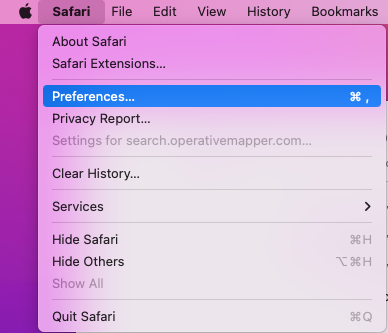

- Carefully take a look at your default home page and change it if the hijacker altered it.
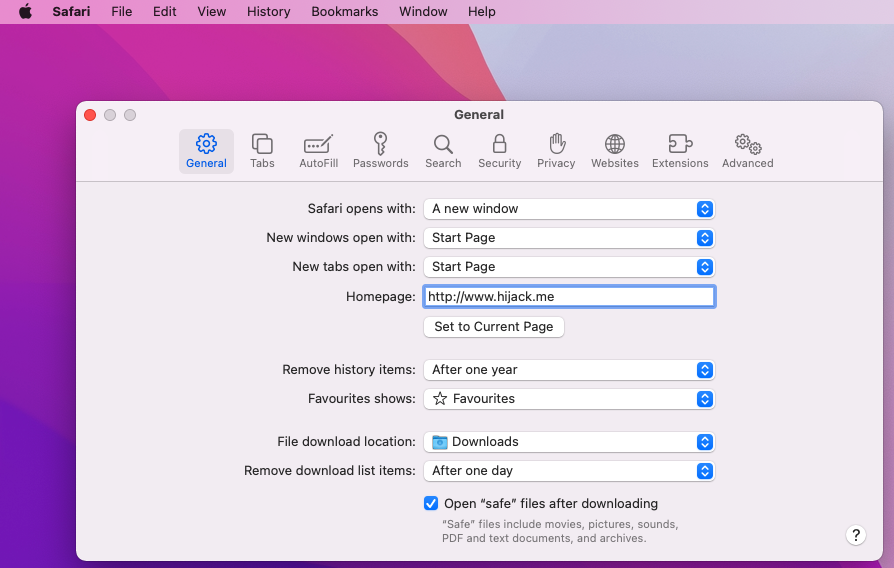

- Then go to the Extensions tab and make sure there are no unknow extensions installed.
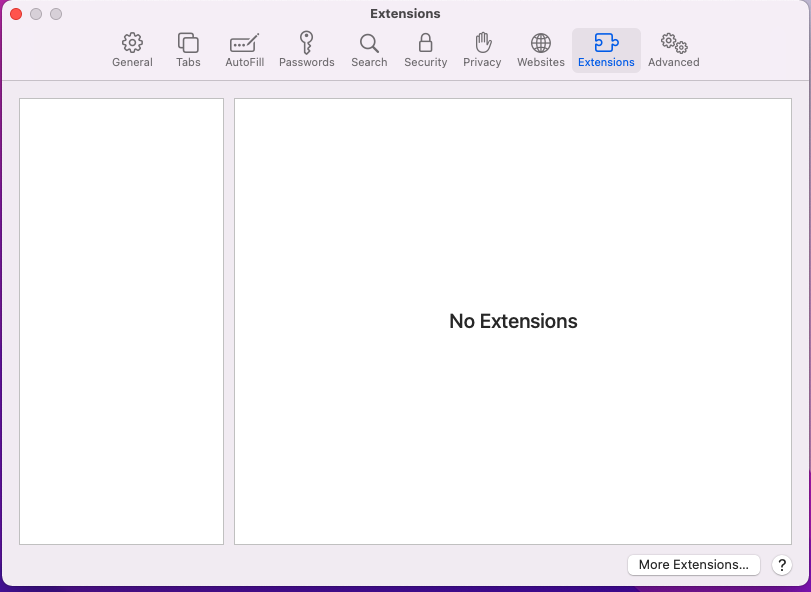

- Next step is to click on Privacy tab
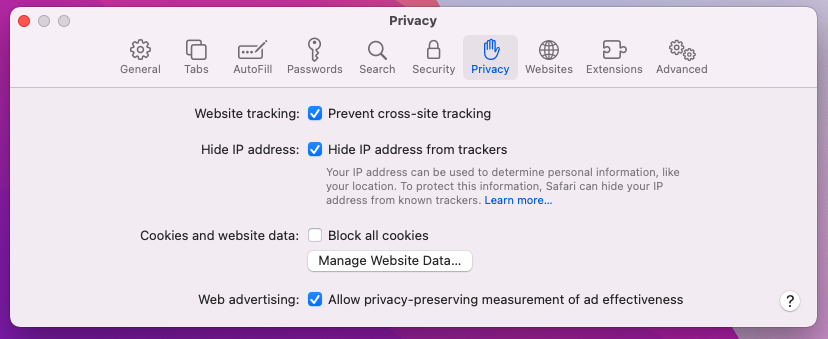

- Manage website data
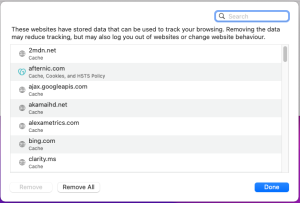

- Here you can remove any unwanted website data or just remove them all. Please, keep in mind that after you do this all stored website data will be deleted. You will need to sign-in again for all websites that require any form of authentication.
- The next step is to Clear History (if you want), select the tab.
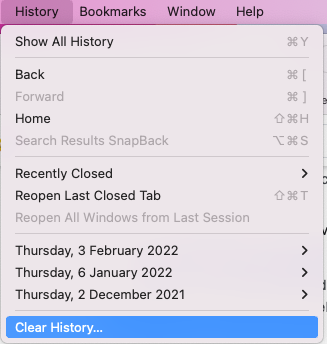

- Click the menu next to clear and choose a time period — if you want to completely reset Safari, choose all history.
- Press Clear History
- To remove from Chrome, open the browser and click the icon with the three dots located in the top-right.
- Select to More Tools --> Extensions and review what Chrome Extensions are present in the browser


- Remove the ones that you do not recognize.
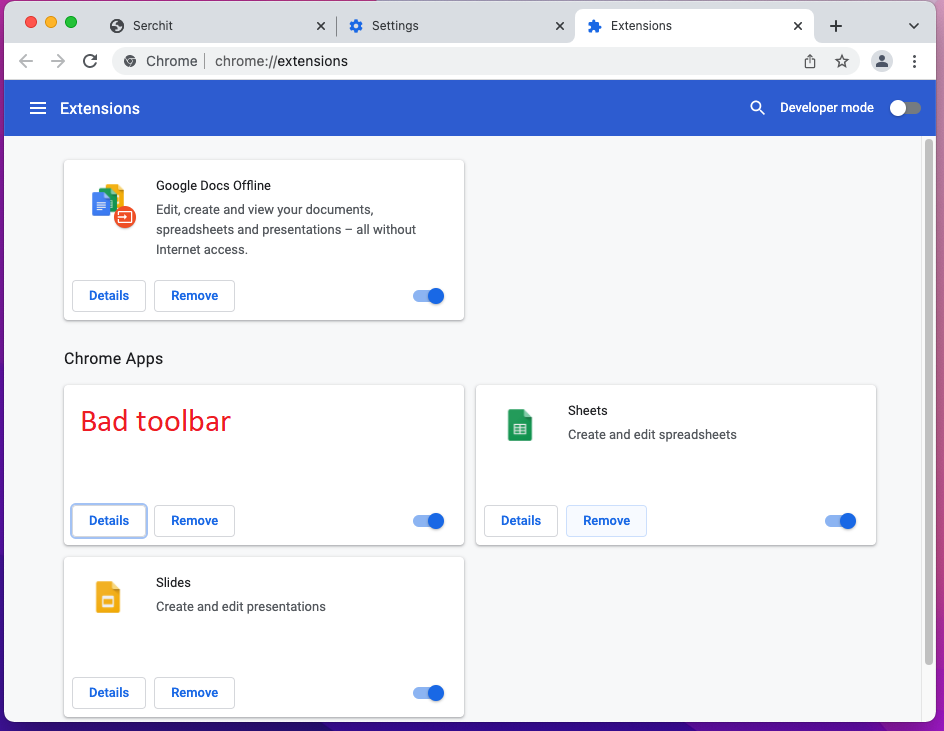

- If the parasite continues to disrupt your browsing with Chrome, this is what else you can do:
- Click again the menu of Google Chrome, and open Settings.
- Select the Search Engine from the left panel, review the available search engines and change the default to your preference.


- Then, click on Manage Search Engines, review the list of search engine availabilities and if any of the listed items looks suspicious, click the three-dots next to them, and delete.


- Click on Privacy and Security in the left panel, select the Clear browsing data option, check every box except the Passwords one, and click Clear Data.


- Next step is to clear Notifications, select the Site settings option in the Privacy and Security section, then locate Notifications.


- Review the listed websites in the Allow to send notifications section and if any of the entries shown there seem dubious or related to the browser hijacker, select the three dots next to the object and click on Remove.
- Start Mozilla Firefox
- On the top right click the three dashes
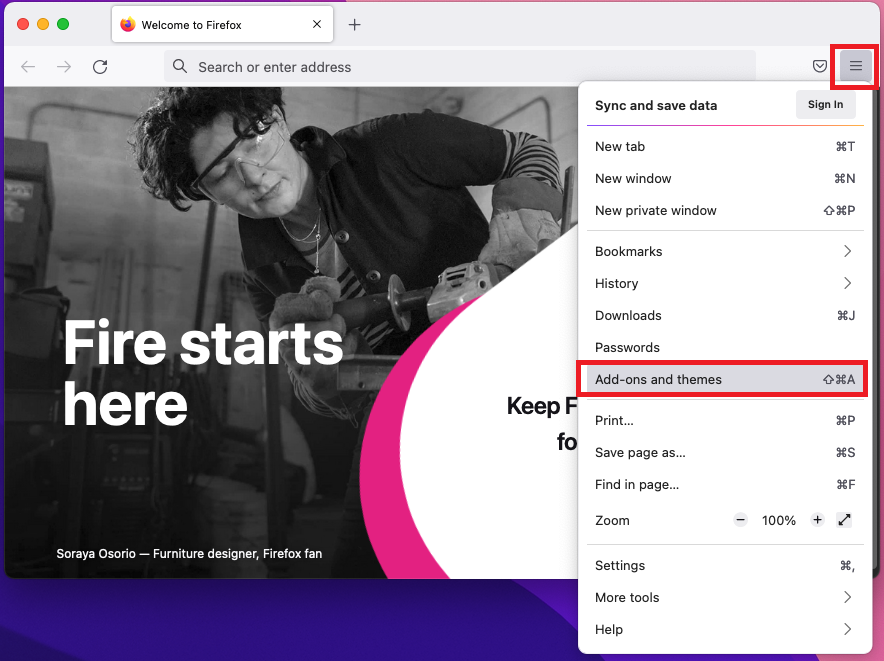

- go to add-ons and themes
- The add-ons manager will open
- Carefully review review four Firefox Extensions
- If any unwanted extension is present, click on the three horizontal dots and then Remove
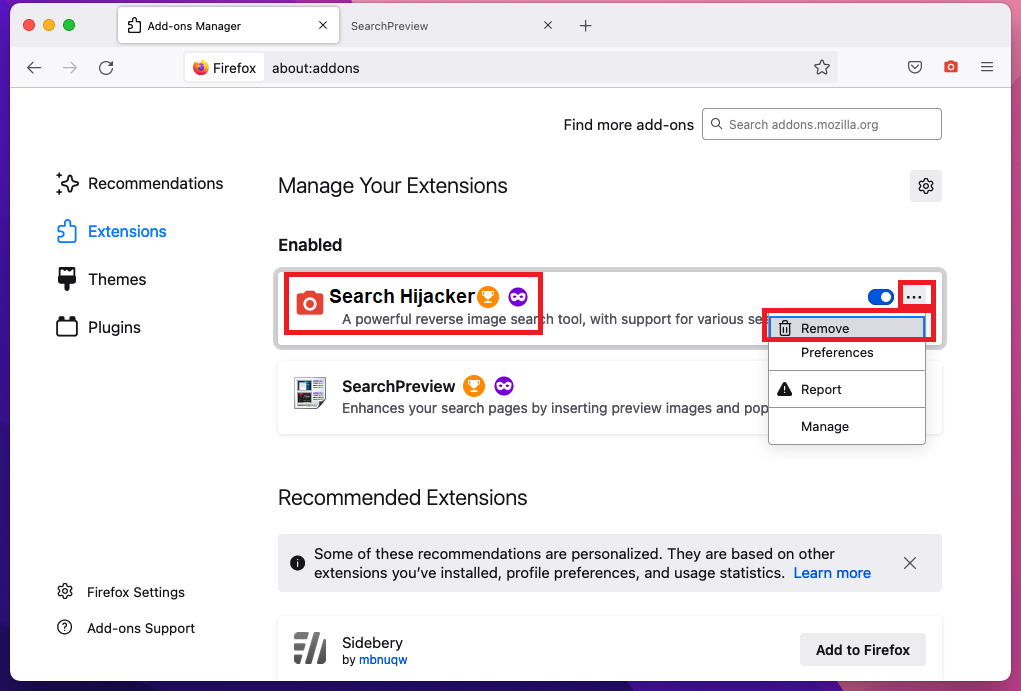

- After the extension is removed, restart Mozilla Firefox by closing it from the red dot in the top left and start it again.
Step 3: Scan for and remove LuckyRelic files from your Mac
Fix your browser settings with SpyHunter Anti-Malware
Once you download and install SpyHunter for Mac run a scan.
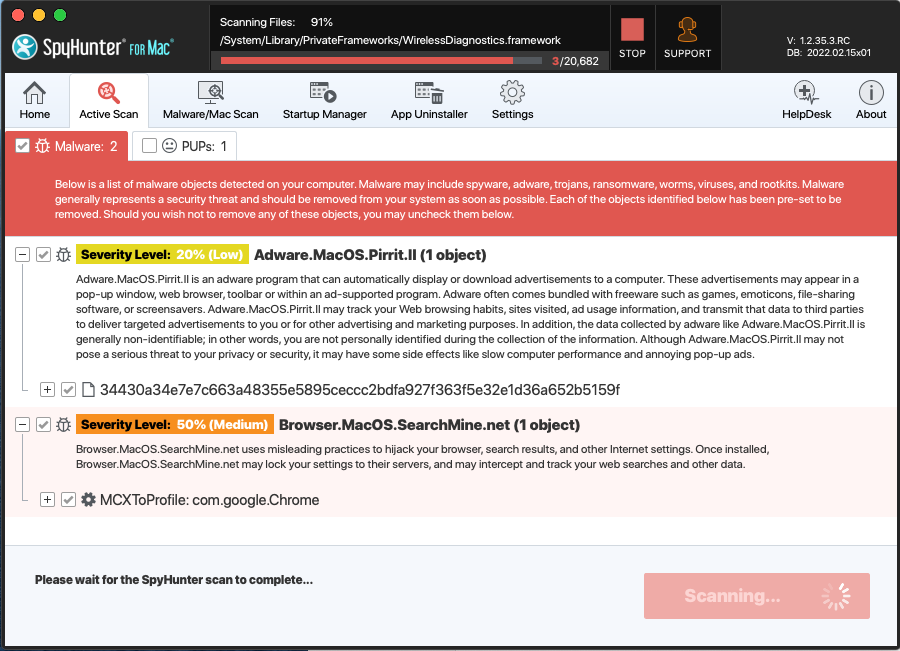

Once the scan is complete, your mac will be virus free.
LuckyRelic malware Frequently Asked Questions:
- How do I get rid of LuckyRelic?
LuckyRelic is a Browser hijacker – malicious software that can be installed by third-party applications or websites. They usually change the settings of web browsers and search engines to display certain ads, pop-ups, banners, etc.
- What are the symptoms of LuckyRelic infection in your Mac?
LuckyRelic becomes your web browser’s built-in search engine.
Your browser’ s search queries are redirected through LuckyRelic.com
The “LuckyRelic” browser extension or some shady software is installed on your Mac.
- How do I remove LuckyRelic from my browser?
In Internet Explorer, click the gear icon on the top left and select Manage add-ons. Under Add-on Types, select Search Providers. Select your search engine from the list of providers and click Remove to remove it. In Google Chrome, go to Settings (at the top right) and choose Search in the On Startup drop down menu.
- How do I uninstall LuckyRelic?
How to Make Your Mac Run Faster?
You might be wondering how to make your Mac run faster? It is a common misconception that the more processing power you have, the faster your computer will run. In reality, it’s actually about what’s going on in your processor and memory. For the average person using a computer for just general applications like word processing and web browsing, you don’t need much in the way of computing power.
– Use an SSD drive instead of a hard disk drive.
– Double your RAM if possible.
– Disable System Integrity Protection (SIP). (Attention! – do this only if you know the consequences.)
References:
- More about pop-up advertisements on Wikipedia.
- MacOS malware
- SpyHunter Anti-Malware overview and also the reasons why we recommend it for malware elimination.
Please, have in mind that SpyHunter offers a free 15-day Trial version with full functionality. Credit card is required, no charge upfront.

